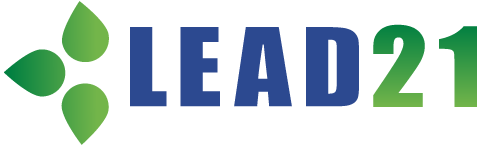Program
How it Works
The one-year LEAD21 core curriculum includes 3 sessions and a concurrent individual learning component.
Leadership competencies are enhanced using a combination of exposure, information, knowledge and practice.
A maximum of approximately 80 participants will be accepted into the program each year, divided into three cohorts for on-site sessions and other group activities.
Each participant’s application must be supported by their dean, director (academic programs, extension or research), or administrator. Institutions are encouraged to send a team of individuals.
The Board of Directors will make a strong effort each year to assure the class represents the diversity of the Land Grant system and its key partners.
Session I
Uses self-assessments to increase awareness of leadership strengths, weaknesses, and styles, and teaches various leadership skills and tools. Participants establish a personal development plan.
Session II
Uses simulations and small group exercises to increase awareness of group and team dynamics, the role of individuals within those groups and teams, and how communication, conflict, change, and collaboration effect teams.
Session III
This session focuses on public leadership, policy development, and federal legislation, as well as managing change and resources.
Core Content Areas
Core Leadership Development Areas
LEAD21 focuses on four core leadership development areas which represent the range of knowledge, skills, values, attitudes, and behaviors that are present in participants at many levels. LEAD21 seeks to enhance as many of these leadership areas as possible and facilitate opportunities for life-long development of all these core areas.
Communicating Effectively
to listen carefully and use questions skillfully to encourage honest responses; to communicate clear, direct, and honest messages to individuals and groups through speaking, writing, and the use of technology; and to maintain composure in stressful situations.
Managing Conflict
to use a range of strategies to deal with conflict between self and others; to mediate conflict among others; to recognize the root causes of conflict; to engage in difficult conversations appropriately to both resolve the conflict and strengthen the relationship; to understand the costs of conflict to a group or organization; and to seek outside help or third-party mediation to resolve conflict.
Fostering Collaboration
to see issues and opportunities from many perspectives; to link resources – public and private, national and international; to balance the needs and expectations of many stakeholders; and to facilitate programs that collaborate across structural, organizational, and international boundaries.
Leading Change
to recognize the need for innovation without indulging in change for change sake; to have a vision for the future and communicating that to others; to monitor the external and internal environment for trends that anticipate change; to understand the range of reactions to change, including resistance, anxiety, and uncertainty; to develop and implement a change process appropriate to the organization and the degree of change; to provide information and education to facilitate change; and to measure the progress of change and ensure the benefits of change.
Secondary Competencies
Leading with Integrity and Values
to understand and honor organizational and cultural values; to communicate personal values that influence personal leadership; to demonstrate consistency between espoused values and values in action; to respect the values of others; and to act ethically.
Developing Self and Others
to seek and use self-assessment and feedback to enhance understanding and performance; to provide others with appropriate and timely feedback and coaching to enhance performance; to create opportunities for development of self and others; to create long-term self-directed and life-long learning and professional development; to volunteer for and excel at performing various leadership responsibilities, often outside the specific requirements of position or role; to seek feedback on leadership performance from groups and organizations; to use performance objectives and assessment for development; and to create an environment where risk and innovation is rewarded.
Valuing Diversity
to express cultural sensitivity and awareness of the diversity inherent in and vital to a modern society; to appreciate cultural differences in social and professional settings; to develop language skills to facilitate multi-cultural relationships; to create an organizational culture that values diversity; to build and value collaborations; and to effectively form teams which balance leadership and followership.
Developing a Deeper Knowledge and Appreciation of Higher Education
to understand higher education in its many different models; to understand the history and traditions of the land grant system; to compare and contrast different models of higher education public service and outreach; and to understand the role of research, academics, and extension in producing economic, social, and environmental change and how it depends on local, state, and federal partnerships.
